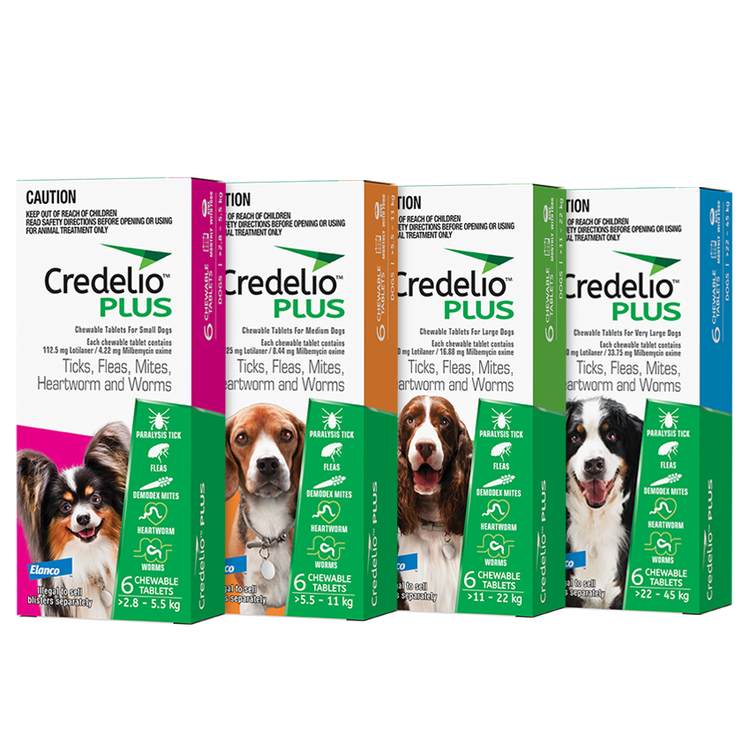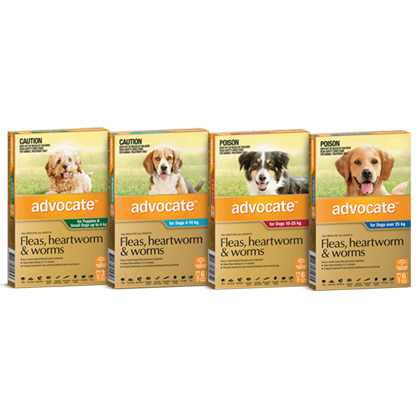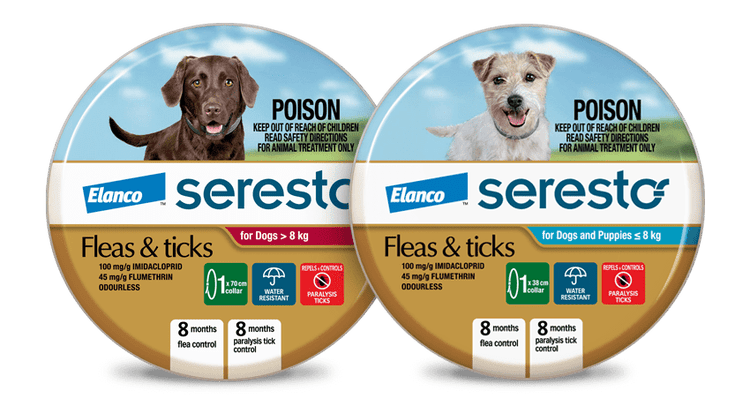Reviewed by Dr Sylvia Shortreed BVSc
As a dog owner, you have plenty of options when it comes to fighting fleas, but how do you know what’s best for your dog?
What’s the best flea treatment for your dog?
With the array of flea treatments now available, keeping your dog protected against fleas is relatively straightforward. You just need to choose which delivery method works best for you and your pet. Use our comprehensive guide to help you decide.
Tablets and Chews
The active ingredients in flea tablets and chews are absorbed into the dog’s bloodstream. Fleas that bite the pet are exposed to the active ingredient and killed. Credelio™ PLUS for dogs starts killing fleas within 2 hours of dosing, and eliminates fleas within 6-12 hours, additionally it also treats and controls ticks, mites, intestinal worms and prevents heartworm disease.
Pros: Tablets and chews are usually flavoured and easy to give. The active ingredients start to work quickly.
Cons: Fleas need to bite your dog to be killed. Each tablet or chew gives varying durations of protection, and sometimes different duration for different parasites, so you’ll need to read the label carefully and keep track of when you give them.
Flea collars
Special medicated flea collars can provide long-lasting protection against fleas, sometimes offering many months of protection at a time.
Pros: Some flea collars remain effective for several months without the need for a top-up treatment. For example, the Seresto™ flea and tick collar for dogs kills fleas for eight months. Seresto is also water-resistant^ and odour-free.
Cons: Effective flea collars typically come with a higher upfront cost, although when you consider the duration of treatment, and cost per month, they are usually very cost effective.
Spot-on treatments
A small pipette of liquid is squeezed onto the base of your dog’s neck, or for larger dogs, in a few spots along their back. The active ingredient is then either absorbed into the dog’s bloodstream or spreads throughout the skin, into the fatty layer.
Pros: Some spot-on formulas are designed to kill fleas on contact. For instance, the active ingredient in the spot-ons AdvantageTM, AdvocateTM and AdvantixTM spreads throughout your dog’s skin, where it kills fleas on contact – so fleas don’t have to bite your pet to be killed. Advantage, Advocate and Advantix are available from vets and pet stores.
Cons: While spot-ons have a lasting effect against fleas, you’ll need to remember to apply the treatment when it’s due, typically monthly.
Flea sprays
Pet-specific flea sprays with insecticides are applied directly onto the roots of a dog’s coat to kill fleas on contact. Don’t confuse these with household flea sprays, which tackle the problem in the home, but must not be used directly on pets. Check the product label first to be sure.
Pros: Sprays work quickly to kill adult fleas on contact on dogs with a flea infestation.
Cons: The entire body of the animal needs to be sprayed, so this treatment can be more time-consuming than some of the other options especially in long-haired or large breeds. Additionally, some dogs don’t like being sprayed, or being restrained while the spray is applied.
Flea shampoos
If your dog has fleas, a special flea-killing shampoo containing an insecticide can help get rid of them.
Pros: These can be good for dogs who like baths.
Cons: Flea shampoos usually need to be left on for at least 10 minutes, and they don’t always have a lasting effect – meaning that they are a short-term solution that won’t necessarily stop your pet becoming reinfested!
Flea combs
Fine-toothed flea combs do not contain chemicals. Instead, repetitive grooming using a flea comb can help remove fleas from your dog’s coat.
Pros: Pets that love being groomed might prefer this method.
Cons: It’s very time-consuming, and it’s hard to remove every flea. Combing also won’t stop new fleas from taking up residence on your pet.
How to choose the right flea treatment for your dog
With a variety of flea treatment options available, selecting the most suitable one for your furry friend can seem overwhelming. To help you make an informed decision, consider the following factors:
- Your dog's preferences and behaviour: Take into account how your dog reacts to different treatment methods. If they enjoy baths, flea shampoos might be a good fit, bearing in mind their short-acting efficacy. If your dog is comfortable with grooming, a flea comb could be a viable option. On the other hand, if your pet dislikes being restrained or sprayed, or has a long coat, spot-on treatments or oral options may be more appropriate.
- Your dog’s size, age, and health: Some flea treatments may not be suitable for puppies, senior dogs, pregnant or nursing dogs, or those with specific health conditions. Always consult your veterinarian for guidance on selecting a treatment that is both safe and effective for your dog’s unique needs.
- Your lifestyle and schedule: Think about how much time you can dedicate to flea treatments. If you prefer a low-maintenance option, consider long-lasting treatments such as flea collars, or monthly spot-on applications or oral chews. If you have more time to devote to flea control, you may opt for regular grooming with a flea comb or frequent baths with flea shampoos, however these methods are best combined with a longer-acting flea control method.
- Flea prevalence in your area: If you live in a region with high flea populations, you might need a more robust and long-lasting treatment to ensure your pet remains protected. In such cases, flea collars, oral chews or spot-on treatments may offer a stronger defence against infestations.
By taking these factors into account, you'll be well-equipped to choose a flea treatment that meets the needs of both you and your canine companion, ensuring a happy, itch-free life together.
Ever wondered how flea treatments work? Uncover the science behind our powerful formulas here.
Always read and follow label directions.
Spot-on treatments
A small pipette of liquid is squeezed onto the base of your dog’s neck, or for larger dogs, in a few spots along their back. The active ingredient is then either absorbed into the dog’s bloodstream, or spreads throughout the skin.
Pros:Some spot-on formulas are designed to kill fleas on contact. For instance, the active ingredient in the spot-ons Advantage, Advocate and Advantix spreads throughout your dog’s skin, where it is able to kill fleas on contact – so fleas don’t have to bite your pet to be killed1. Advantage, Advocate and Advantix are available from vets and pet stores.
Cons:While spot-ons have a lasting effect against fleas, you’ll need to remember to apply the treatment when it’s due, typically monthly.
Tablets and Chews
The active ingredients in flea tablets and chews are absorbed into the dog’s bloodstream. Fleas that bite the pet are exposed to the active ingredient and killed.
Pros: Tablets and chews are usually flavoured and easy to give. The active ingredients start to work quickly.
Cons: Fleas need to bite your dog to be killed. Each tablet or chew gives varying durations of protection, and sometimes different duration for different parasites, so you’ll need to read the label carefully and keep track of when you give them.
Flea collars
Special medicated flea collars can provide long-lasting protection against fleas, sometimes offering many months of protection at a time.
Pros: Some flea collars remain effective for several months without the need for a top-up treatment. For example, the Seresto flea collar for dogs kills fleas for eight months. Seresto, is also water-resistant^ and odour-free.
Cons: Effective flea collars typically come with a higher upfront cost, although when you consider the duration of treatment, and cost per month, they are usually very cost effective.
There are a whole range of different pet flea treatments available that all work in slightly different ways. The one that’s right for you and your dog will depend on your individual dog as well as your personal preference.
Featured Products

Credelio™ Plus 4 in 1 protection in the smallest chew
Keeps your dog protected from ticks, fleas, demodex mites PLUS heartworm and intestinal worms.

Advocate for dogs
Advocate provides fast relief from fleas, prevents deadly heartworm and helps protect your dog and your family from most intestinal worms

Seresto flea & tick collar for dogs
Seresto provides dogs with long-lasting flea protection for 8 months and tick protection for 4 months





